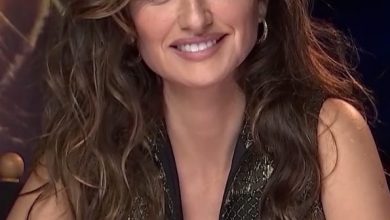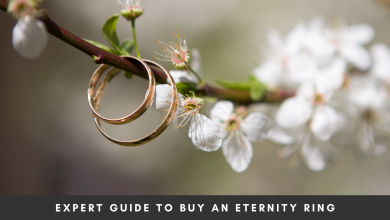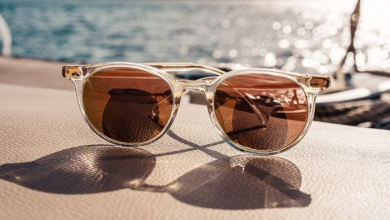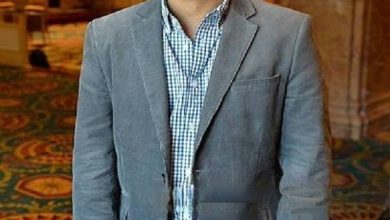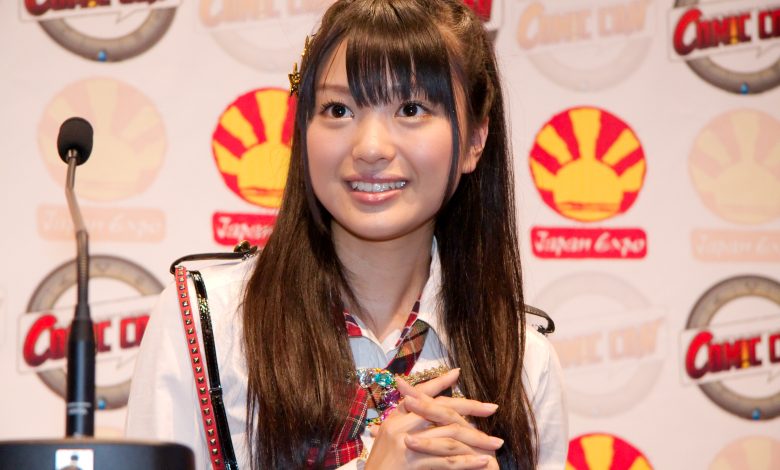
Hairstyles in Japan
Hairstyles in Japan have evolved throughout the years and have become a reflection of Japanese culture and society. From traditional hairstyles to modern trends, Japanese hairstyles have always been diverse and unique. In this article, we will look at some of the most popular hairstyles in Japan and explore the cultural significance behind them.
Modern Japanese Hairstyles
The Bowl Cut
The bowl cut is a hairstyle popular in Japan in the 90s. It is a short, layered hairstyle cut to resemble a bowl. This hairstyle is perfect for those who want a low-maintenance look that still has a touch of edge.
The Undercut
The undercut is a popular hairstyle among Japanese men. It features short hair on the top of the head, with longer hair on the sides and back. The length of the hair on the sides and back can vary, but it typically falls between the ears and the shoulders. This hairstyle is perfect for those who want a low-maintenance look that still has a touch of edge.
Bob Cut
The bob cut is a modern Japanese hairstyle that has become popular in recent years. This hairstyle is characterized by a short, straight cut that falls to the chin or shoulder level. The bob cut is often styled with bangs and can be worn in a variety of ways, such as sleek and straight or wavy and messy. This hairstyle is considered versatile and easy to maintain, making it popular among Japanese women of all ages.
The Shaggy Cut
The shaggy cut is a modern Japanese hairstyle that has become popular among young men in recent years. This hairstyle is characterized by a layered, messy cut often styled with a messy fringe. The shaggy cut is considered edgy and trendy and is often paired with a beard or mustache. This hairstyle is popular among young men who want to make a fashion statement.
Shaggy Mullet
The shaggy mullet is a popular hairstyle among Japanese men. It features short hair on the top of the head, with long hair in the back. The length of the hair in the back can vary, but it typically falls between the shoulders and the mid-back. This hairstyle is perfect for those who want a low-maintenance look that still has a touch of edge.
The Pixie Cut
The pixie cut is a modern Japanese hairstyle that has become popular among young women in recent years. This hairstyle is characterized by a short, layered cut often styled with bangs. The pixie cut is considered cute and feminine and is often paired with bold makeup and colorful hair accessories. This hairstyle is popular among young women who want to make a fashion statement.
The Topknot
The top knot is a traditional hairstyle that is still popular in Japan today. It is a hairstyle that features the hair pulled back and tied into a knot at the top of the head. This hairstyle is perfect for those who want a sleek and sophisticated look.
Traditional Japanese Hairstyles
- Samurai Topknot: The samurai topknot, also known as the chonmage, is a traditional hairstyle worn by samurai warriors during the Edo period (1603-1868) in Japan. This hairstyle was a symbol of the samurai class and was worn as a badge of honor. The topknot was created by shaving the sides of the head and leaving a long strand of hair on top, which was then tied into a knot and secured with a hairpin. The chonmage hairstyle was worn by men of all ages and was considered a symbol of strength, courage, and honor.
- Geisha Bun: The geisha bun, also known as the odango, is a traditional hairstyle worn by geisha, or traditional Japanese female entertainers, during the Edo and Meiji periods. This hairstyle was created by gathering the hair at the crown of the head and shaping it into a bun secured with pins and ribbons. The geisha bun was often decorated with hair ornaments such as combs, pins, and flowers. The odango hairstyle was considered elegant and sophisticated and was worn by women of all ages.
Is hair important in Japanese culture?
Hair plays an important role in Japanese culture, historically and in modern times. In ancient Japan, hairstyles were a way to indicate their social status and profession. Samurai warriors, for example, typically had a topknot hairstyle, while commoners had a more simple, short hairstyle.
In modern Japan, hair is still considered a significant aspect of appearance and personal grooming. Many Japanese people take great care in styling and maintaining their hair, and it is not uncommon for them to visit hair salons regularly. Additionally, traditional Japanese hairstyles, such as the geisha’s iconic hairstyle, are still worn and celebrated in contemporary culture.
Hair is also an important aspect of Japanese fashion. Many Japanese fashion trends, such as Harajuku and Lolita, feature unique and elaborate hairstyles. Hair accessories, such as ribbons and hairpins, are also popular in Japanese fashion.
In Japan, hair is not only important for fashion and grooming but also has spiritual significance. Shintoism, Japan’s indigenous religion, holds that hair symbolizes a person’s soul, so cutting hair is considered a significant event.
Read More: You Need This Short Bob Wig For Vacation
Is ponytail not allowed in Japan?
It is a common misconception that ponytails are not allowed in Japan. While there may be some workplaces or schools that have strict dress codes that prohibit certain hairstyles, this is not a cultural norm or widespread practice in Japan. In fact, ponytails are a popular hairstyle for both men and women in Japan.
The idea that ponytails are not allowed in Japan likely stems from the strict dress codes and grooming standards that are often enforced in certain professions, such as teaching or working in a traditional Japanese office. However, even in these situations, ponytails may still be allowed if they are neat. So, it is not accurate to say that ponytails are not allowed in Japan.
Why do girls cut their hair in Japan?
In Japan, there is a cultural tradition known as “Oh-Cho-Matsu,” which translates to “big chop.” This tradition involves a woman cutting her hair as a symbol of a new chapter in her life, such as starting a new job or leaving a past relationship.
Cutting one’s hair is also seen to symbolize a new beginning or a fresh start. This tradition is not limited to just women, but it is more commonly associated with them. Some women also cut their hair as a way to cope with stress or to mark a significant change in their lives.
Another reason why some women in Japan cut their hair is because of the cultural pressure to conform to certain beauty standards. Long hair is often considered the epitome of femininity and beauty in Japan, so some women may feel pressure to cut their hair to fit societal expectations. Additionally, short hair is often associated with a more mature and professional appearance, which can be desirable for women in the workforce.
What is the hair care routine in Japan?
Japan is known for its beauty and skincare industry, and hair care is no exception. The Japanese have a unique approach to hair care that focuses on keeping hair healthy and shiny rather than just styling it. Here is a typical hair care routine in Japan:
1. Shampoo and Conditioner
Japanese hair care products are known for their high-quality ingredients, such as camellia oil and silk protein. These ingredients help to nourish and strengthen the hair. Japanese shampoos and conditioners are also formulated to be gentle on the hair and scalp, making them suitable for daily use.
2. Hot Oil Treatment
Hot oil treatments are a popular hair care method in Japan. These treatments involve applying warm oil to the hair, usually camellia or argan oil, and leaving it on for several minutes. The heat helps to open the hair cuticles, allowing the oil to penetrate deeper into the hair. This helps to nourish and moisturize the hair, leaving it feeling soft and shiny.
3. Hair Mask
Hair masks are another popular hair care method in Japan. These masks are typically used once or twice a week to deeply nourish and repair the hair. They contain a higher concentration of ingredients than regular conditioners and are left on the hair for a longer period. Some popular hair mask ingredients include keratin, collagen, and ceramide.
4. Scalp Care
Scalp care is an important aspect of hair care in Japan. The Japanese believe that a healthy scalp leads to healthy hair. Scalp care products, such as scalp toners and exfoliants, are used to remove excess oil and dead skin cells from the scalp. This helps to promote a healthy environment for hair growth and prevent dandruff.
5. Hair Styling
Japanese hair styling is typically minimal and natural-looking. The focus is on keeping the hair healthy and shiny rather than creating bold or complicated styles. Traditional Japanese hairstyles, such as the “geisha” hairstyle, are still popular today. They are often achieved using simple tools such as combs and hairpins.
Overall, the Japanese hair care routine emphasizes nourishment, moisture, and maintaining a natural look. This approach to hair care can help to keep hair healthy and shiny in the long term rather than just making it look good for a short period. It’s a great way to take care of your hair and make it look beautiful.
Conclusion
Hairstyles in Japan have evolved throughout the years and have become a reflection of Japanese culture and society. From traditional hairstyles such as the samurai topknot and the geisha bun to modern trends like the bob cut, shaggy cut, and pixie cut, Japanese hairstyles have always been diverse and unique.
Each hairstyle has its cultural significance and is worn by people of different ages and genders. Japan is a country where fashion and hairstyles are constantly evolving, and it is exciting to see how hairstyles will continue to change and adapt in the future.
FAQs (Frequently Asked Questions)
- What are some traditional hairstyles in Japan?
Traditional hairstyles in Japan include the “odaiko” hairstyle for men and the “shimada” hairstyle for women. The odaiko is characterized by its topknot, while the shimada is a chignon hairstyle.
- What are some popular hairstyles in Japan currently?
Some popular hairstyles in Japan currently include the bob cut, pixie cut, and shaggy hairstyles for women, and short and medium-length hairstyles for men.
- Are there any hairstyles that are unique to Japan?
Some hairstyles that are unique to Japan include the “kamikaze” hairstyle, which is a modern variation of the traditional samurai hairstyle, and the “hime cut,” which is a princess-like long and straight hair with bangs.
- What hairstyles are considered fashionable or trendy in Japan?
In Japan, hairstyles that are considered fashionable or trendy tend to be those that are easy to maintain and style. Short and medium-length hairstyles for women and short and medium-length hairstyles for men are currently considered fashionable.
- What are the hairstyles that are considered professional or formal in Japan?
In Japan, hairstyles considered professional or formal tend to be short and well-groomed. Men usually have short hair, and women usually have a bob cut or a pixie cut.
- Are there any hairstyles that are considered casual or informal in Japan?
In Japan, hairstyles that are considered casual or informal tend to be longer and more relaxed. Men may have medium-length hair and women may have longer hairstyles such as shaggy or braids.
- Are there any hairstyles that are popular among young people in Japan?
Popular hairstyles among young people in Japan include the bob cut, pixie cut, and shaggy hairstyles for women and short and medium-length hairstyles for men.
- Are there any hairstyles that are popular among older people in Japan?
Popular hairstyles among older people in Japan tend to be short and well-groomed, with women often choosing a bob cut or a pixie cut and men often choosing a short, neat hairstyle.
- In Japan, what are the most popular hairstyles for men?
Popular hairstyles among men in Japan include short and medium-length hairstyles, such as the buzz cut, crew cut, and the side part hairstyle.
- In Japan, what are the most popular hairstyles for women?
Popular hairstyles among women in Japan include the bob cut, pixie cut, and shaggy hairstyles. Long hair with straight hair is also popular among women in Japan.
Apart from this if you are interested to know more about Top-Tier Styling Products For All Hair Types then visit our Fashion category.


